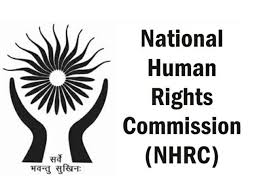Supreme Court agreed to significantly ease the procedure for passive euthanasia in the country by altering the existing guidelines for ‘living wills’
What Is Euthanasia?
- Euthanasia refers to the practice of an individual deliberately ending their life, oftentimes to get relief from an incurable condition, or intolerable pain and suffering.
- Euthanasia, which can be administered only by a physician, can be either ‘active’ or ‘passive’.
- Active euthanasia involves an active intervention to end a person’s life with substances or external force, such as administering a lethal injection.
- Passive euthanasia refers to withdrawing life support or treatment that is essential to keep a terminally ill person alive.
- Passive euthanasia was legalised in India by the Supreme Court in 2018, contingent upon the person having a ‘living will’ or a written document that specifies what actions should be taken if the person is unable to make their own medical decisions in the future.
- In case a person does not have a living will, members of their family can make a plea before the High Court to seek permission for passive euthanasia.
Is Euthanasia Legal in India?
- A five-judge bench of the Supreme Court in Common Cause vs Union of India (2018) recognised a person’s right to die with dignity, saying that a terminally ill person can opt for passive euthanasia and execute a living will to refuse medical treatment.
- The Court permitted an individual to draft a living will specifying that she or he will not be put on life support if they slip into an incurable coma.
- The Court recognised the right to die with dignity as a fundamental right and an aspect of Article 21 (Right to Life).
- In India, active euthanasia is a crime.
- Section 309 of the Indian Penal Code (IPC) deals with the attempt to commit suicide and Section 306 of the IPC deals with abetment of suicide – both actions are punishable.
- Only those who are brain dead can be taken off life support with the help of family members.
2018 Guidelines On Euthanasia
- A living will was required to be signed by an executor (the individual seeking euthanasia) in the presence of two attesting witnesses, preferably independent, and to be further countersigned by a Judicial Magistrate of First Class (JMFC).
- Also, the treating physician was required to constitute a board comprising three expert medical practitioners from specific but varied fields of medicine, with at least 20 years of experience,
- If the medical board granted permission, the will had to be forwarded to the District Collector for his approval.
- The Collector was to then form another medical board of three expert doctors, including the Chief District Medical Officer.
- Only if this second board agreed with the hospital board’s findings would the decision be forwarded to the JMFC, who would then visit the patient and examine whether to accord approval.
New Guidelines On Euthanasia
- Instead of the hospital and Collector forming the two medical boards, both boards will now be formed by the hospital.
- The requirement of 20 years of experience for the doctors has been relaxed to five years. The requirement for the Magistrate’s approval has been replaced by an intimation to the Magistrate.
- The medical board must communicate its decision within 48 hours; the earlier guidelines specified no time limit.
- The 2018 guidelines required two witnesses and a signature by the Magistrate; now a notary or gazetted officer can sign the living will in the presence of two witnesses instead of the Magistrate’s countersign.
- In case the medical boards set up by the hospital refuses permission, it will now be open to the kin to approach the High Court which will form a fresh medical team.
Other Countries On Euthanasia

To Download Monthly Current Affairs PDF Click here
Click here to get a free demo
Everything About CLAT 2025



